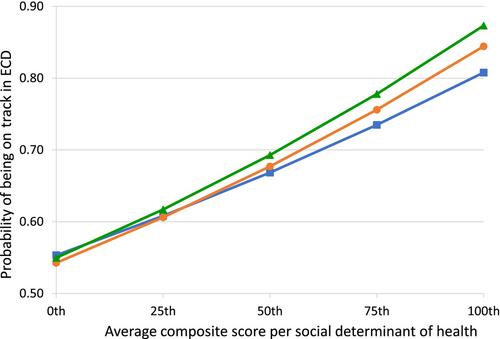The gradient of social determinants of health and related inequalities and early childhood development: Analysis of two rounds of a cross-sectional survey
Abstract
Aim
Social determinants of health (SDH) have a critical role in child development. Yet these determinants are often overshadowed. This study examines the effect of composites of five SDH on early childhood development (ECD) of children of age 36–59 months.
Methods
We used two 2013 and 2019 rounds of Multiple Indicator Cluster Survey Bangladesh data. The analytical sample included ECD data for 25 721 children. ECD was computed following United Nations International Children's Emergency Fund's psychometric approach. Three composite indices of SDH were developed to examine their gradient effects on ECD. Poisson regression with robust variance was used to examine the relationship between SDH indices and ECD. The concentration index was computed, and a concentration curve was developed to measure inequalities in being on track of ECD among children with various levels of SDH.
Results
Almost 69% of children were on track in their ECD, a higher percentage in 2019 (74.85%) than in 2017 (65.37%). The prevalence of children on track in their ECD significantly rises per unit in the score of three SDH composites (adjusted prevalence ratios are 1.04 (95% confidence interval (CI): 1.03–1.04) for summative and standardised indexes and 1.49 (95% CI: 1.41–1.58) for weighted index). There is almost a linear positive relationship between the SDH composite and ECD. Significant concentration indexes suggest SDH-related inequalities in ECD.
Conclusion
Children's early development can be hampered due to unfavourable SDH. Although ECD plays a vital role in creating and maintaining socio-economic and health inequalities through to adulthood, favourable SDH needs to be ensured during childhood.


 求助内容:
求助内容: 应助结果提醒方式:
应助结果提醒方式:


